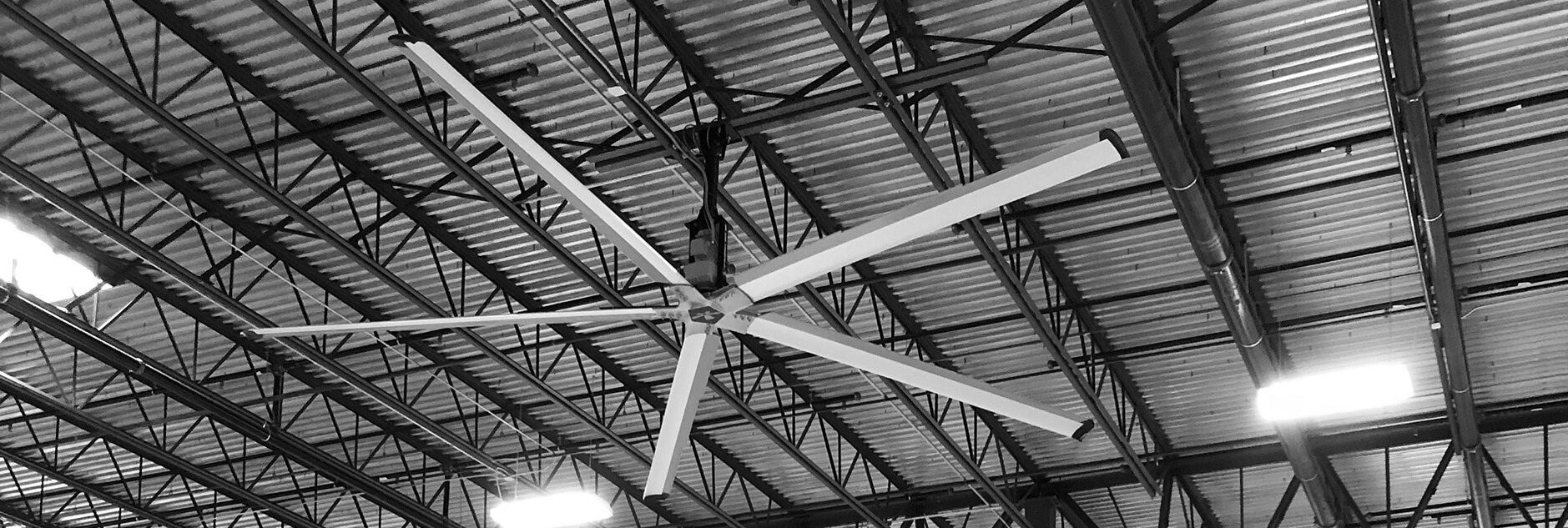HVLS Fan Frequently Asked Questions


Not sure an HVLS fan is for you? Most likely, you simply don’t have the information you need to make an informed decision. Here are some of the most common questions we hear, to help you determine whether an HVLS fan would be a good investment for your facility.
What is the difference between an HVLS fan and a traditional fan?
An HVLS (high volume, low speed) fan resembles a traditional fan, but there are some important differences. In contrast to traditional high-speed fans, HVLS fans have much longer blades and are designed to move a massive column of air very slowly. This results in a number of advantages, including:
- Greater airflow. The huge size of these fans enables one fan to cover a much larger area — up to 40,000 square feet — with far fewer dead spots, even around objects in the room.
- Quiet, non-disruptive operation. More air moving slower means less turbulence, noise and distracting breezes.
- Greater energy efficiency. Because there is less turbulence, less energy is lost due to friction between stationary and moving air. Plus, the slower speed of the fan requires less energy to run.
- Lower maintenance. Less vibration during operation also means parts last longer.
What types of facilities benefit most from HVLS fans?
- Barns and large agriculture buildings
- Warehouses
- Airplane hangars
- Theaters
- Restaurants, bars and breweries
- Large lobbies
- Public spaces
- Recreational facilities
What is the life expectancy of an HVLS fan?
HVLS fans can run for years or even decades with very little maintenance, and the warranty on a high-quality model with reflect that. For example, our Z-Tech™ Fan has a lifetime warranty on blades, hub and mounting system, and a full 15-year warranty on the motor, gearbox and controller.
Are HVLS fans compatible with my building management system?
A good HVLS fan should integrate with your BMS. We design all our fans to be operable from a state-of-the-art ABB controller that can run more than two dozen units from a single keypad and can link to your existing building automation system. Our Z-Chill™ Fan & Diffuser System is specifically designed to work with your air conditioning system for improved energy efficiency and comfort.
How much can I expect to spend for an HVLS fan?
Prices vary considerably depending on make, model and other variables. In general, most high-quality HVLS fans run between $2,000 and $9,000. You will need to factor in shipping costs, as well as the cost of installation, upgrades and, for some manufacturers, warranty. However, the energy efficiency benefits are significant; it is not uncommon for an HVLS fan to pay for itself in two years or less.
Want to know more?
If you’ve read this far, we’re guessing you may be feeling a VividAir HVLS fan could be a good choice for your needs. And you probably want to know more. We’ve got you covered: Visit our website www.vividairmovement.com
